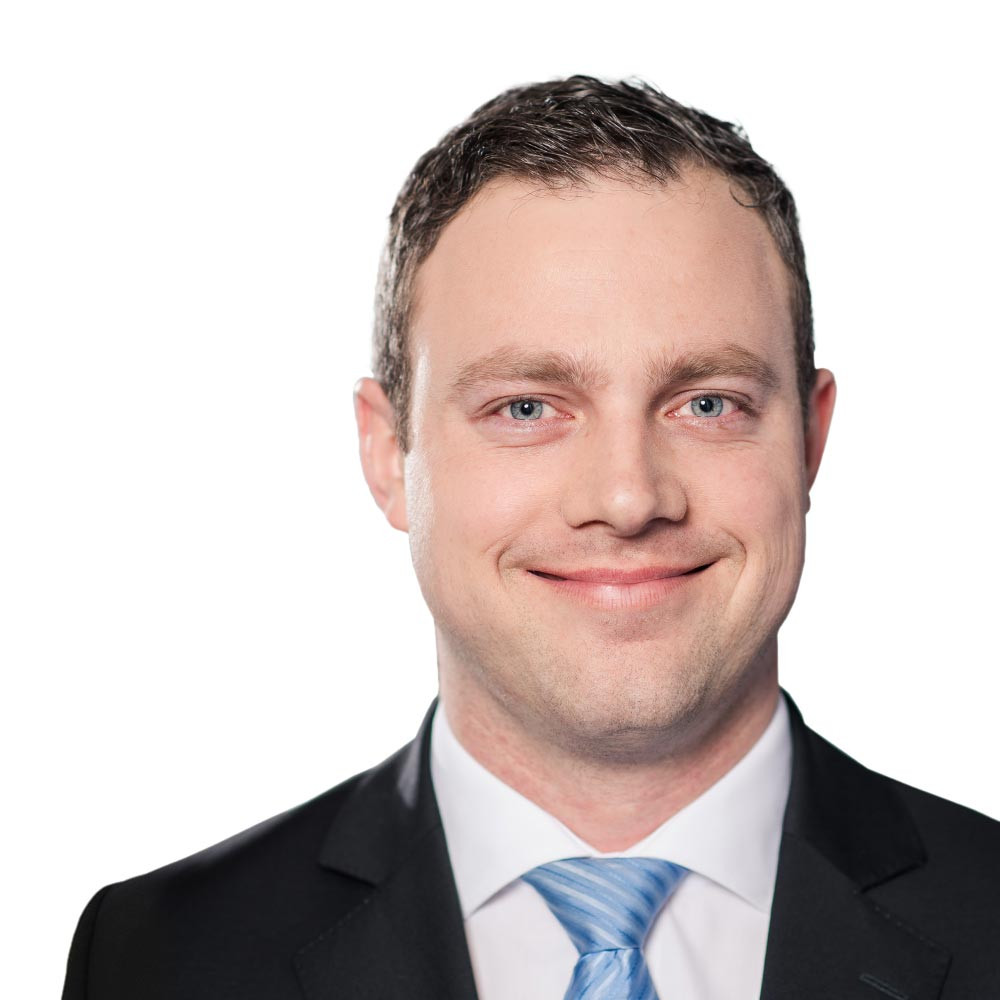Why is it that some companies swear by standard solutions when modernizing their HR IT landscape, while others decide to develop a brand-new system entirely in-house? An interview with Holger Jungk, an HR IT expert in the hkp// group, and Peter Dodell from Siemens Energy. Since it spun off from the Siemens Group, the corporation has relied on its proprietary COIN system to provide the IT infrastructure for its compensation and benefits division.
Mr. Dodell, the spin-off from Siemens AG is still a relatively recent occurrence. What HR IT system requirements did you have to ensure that operations would be smooth following Siemens Energy’s spin-off and IPO?
Peter Dodell: For both the compensation segment and all HR topics, we needed a guarantee that the systems and processes would go well with the new company’s strategy and culture, and that both implementation and use would be standardized worldwide. That was our brief.
That sounds like a very extensive project …
Peter Dodell: … and it’s quite similar to open-heart surgery. After all, it’s a tremendous feat when several tens of thousands of employees are pulled out of a global corporation like Siemens, which employs more than 360,000 staff, and transferred to a new global, listed entity. Even more so when you consider how little time there was until the launch. We’re also transforming from a very heterogeneous process and IT landscape that had grown historically over decades and was the origin of locally embodied compensation decisions and processes in many countries.
Even though both the timescale and budget were tight, you opted not to use a standard IT system for HR management activities, and instead went for an in-house development. Why?
Peter Dodell: Developing our own HR IT system isn’t an end in itself for us, and naturally we also needed good reasons not to default to using a cloud solution. In addition to significantly improved usability and user experience, the decisive factor for us was that we believed a proprietary solution would generate strong competitive advantages in key processes – especially in applying the defined compensation strategy in operations. This approach also allows us to manage our IT expenses, not to mention our staff costs, far better.
Mr. Jungk, are your reasons the same as the Siemens Energy experts’?
Holger Jungk: I fully understand them. Other companies examine the potential alternatives too, in the sense of make-or-buy decisions, before introducing a standard solution. But it was undoubtedly a brave decision given the time constraints and pressure on earnings. Then again, describing the complexity of a multinational company in a subject area like compensation, which is strongly influenced by external regulations, is particularly difficult with a standard solution. Every company has its own unique implementation ideas and requirements.
Peter Dodell: These circumstances were exactly the ones that were critical in our decision-making process. We see so many different and complex requirements – both content-related and regional – that even implementing them in the optimized way we were aiming for didn’t seem feasible simply with a standard application. We were of the opinion that it was important to use a holistic solution, even for those function blocks that cannot be found in that form in the standard HR IT cloud solutions. After all, users of cloud solutions have two alternatives: either waiting until the required functions are made available in one of the future releases, or developing manual work-arounds.
What functionalities tipped the scales back then?
Peter Dodell: The main benefit is high usability, so we can offer employees an efficient self-service for compensation issues, which frees up more space for value-adding activities. But also linking and transparently providing the relevant compensation information, which allows managers to make informed decisions. For example, the topic of market intelligence is integrated into all of our COIN system’s modules and is available to managers and HR employees for all relevant processes. What’s more, compensation processes are mapped in real time in our analytics environment. This means that staff costs are always displayed both efficiently and transparently, and process monitoring and controlling are facilitated.
What about the administrative burden?
Peter Dodell: We shouldn’t disregard how efficient process administration by a BPO and by company employees can be. Here, we paid particular attention to flexible and dynamic processes and implementing and monitoring them in our administrative environment, with the upshot being that we now only need a far smaller team to simultaneously carry out the global processes in more than 80 countries.
Mr. Jungk, how often do companies opt for proprietary development? Is Siemens Energy an isolated case?
Holger Jungk: While it’s certainly not an isolated case, the fact of the matter is that most of our customers have opted for cloud-based HR IT solutions over the last decade. These standard solutions’ range of functions has grown steadily, so in most cases more functionalities are shown than required. But it’s still difficult to implement variations from standard solutions.
So, you’re saying that the increasing range of functionalities can’t compensate for the limitation in differentiation?
Holger Jungk: Exactly. Ultimately, companies cannot set themselves apart through processes. Additionally, a standard process may not have the fit that providers promise in pitch situations, so companies are looking at potential alternative scenarios. Particularly specific topics and some local legislation often prevent use of standard solutions; then, additional proprietary developments or manual processes are required with the help of additional resources from external service providers.
Peter Dodell: The German pricing system in particular is known to pose still unsolvable problems for the large HR IT cloud solutions. At present, we have just under 25,000 employees in Germany. Especially for these topics, our proprietary development is very flexible and affordable to adapt, and the German specifics can also be integrated well into the global solution. From experience, special requests for standard HR IT solutions are very difficult to implement unless a majority of customers have the same request. And customizations by third-party companies are very costly.
How, then, would you describe the alternative scenario?
Holger Jungk: One approach currently being tested by several customers is using one of the major cloud providers’ basic master data system and then connecting it to niche solutions – for the likes of recruitment – or even proprietary developments over standard interfaces.
Is this the path that Siemens Energy is following too?
Peter Dodell: We felt that it was important to integrate COIN with our global HR IT solution from the outset. After all, we regularly receive HR master data that we work with in our processes. But, at the same time, we also send lots of data back to other HR applications for reporting purposes. This is particularly relevant for topics where we are the ones generating the data – take compensation, position evaluation and share-based compensation, for example.
Holger Jungk: Apart from technical issues, integrability is a key success factor. Isolated solutions that aren’t connected over modern interfaces would be a step backwards. They are difficult to manage, expensive to maintain, and lead to data inconsistencies.
Is there a rule outlining the conditions under which it’s better to fall back on a standard IT solution?
Holger Jungk: It all boils down to the maturity of the HR IT systems. For a company that has a fragmented IT architecture and numerous MS Excel workarounds still, an HR IT cloud standard solution really does help a great deal with harmonizing processes, eliminating inefficiencies and subsequently putting the HR function in a stronger position. Whether you want to license a provider’s entire range of functionalities depends on a number of different factors. Examples like COIN are evidence of that.
That sounds convincing, doesn’t it?
Peter Dodell: It is. But strategy, culture and IT too are very specific things. IT solutions are measured by their value creation, which is generated from efficient operations through simple user self-service. If this isn’t provided, the company needs extra money again for call centers or training courses, or has to put up with dissatisfied customers. I still think there is a great deal of catching up to do in terms of usability – particularly in the large external HR IT solutions, but also generally in many other segments in companies’ support functions. Ultimately, the end user should enjoy using an application to ensure it doesn’t become obsolete due to dissatisfaction. The overwhelmingly positive internal feedback on COIN shows that we’re on the right track with our proprietary development.
What role do costs play when it comes to deciding in favor of or against a standard IT solution?
Holger Jungk: Costs are always an issue, all the more so when (as in Siemens Energy’s case) operations need to be improved and streamlined from the outset once the company has been spun off from the Siemens family.
But isn’t a proprietary development always more expensive than a standard IT solution?
Holger Jungk: If you’re comparing pure costs, a proprietary development will always be more expensive, but not necessarily so when you’re considering total costs. One shouldn’t have a limited, one-dimensional view that focuses on one-time investments or IT maintenance. From experience, we know that inefficiently executed processes result in high follow-up costs, among other things due to the need for more intense support for employees who cannot carry out their tasks effectively because the system isn’t user-friendly enough and who have to use resources in the call center or a help desk.
So it always remains a trade-off between specific, individual costs and benefits?
Peter Dodell: Exactly. With COIN, we’ve got functionalities that won’t be available in standard solutions for years. We manage all the reward processes from a single source, and can make savings through the transparency and controllability gained in this way.
Can you back that up with specific examples?
Peter Dodell: For example, we run our first-ever global salary maintenance process simultaneously in over 70 countries with a callback rate of just 1 to 2%, without any additional support or costs. These are important arguments – and not just on the costs side either! Efficient self-services and the newly achieved transparency mean our managers can now make better and far faster decisions for their 70,000 employees, particularly with regard to individual compensation differentiation. With Advanced Analytics and Scenario Modeling, we’re also offering central control elements to map the corporate strategy in the compensation strategy and thus be capable of generating significantly greater economies of scale.
In light of these positive effects, I have to ask whether we’ll see more proprietary developments in the overall market again in future?
Holger Jungk: I can imagine that, in future, there will be more companies setting themselves apart through HR IT solutions. As long as the fit with the HR master data system is still guaranteed as a secondary condition, this is also noncritical and, depending on the situation, can significantly enhance efficiency while costs stay the same. The standard cloud solution’s strength lies in its global platform. There are also exciting developments in the low and no code segments, where the business side can develop or adapt processes without extensive programming knowledge. What’s more, we’re currently seeing a trend in many other global companies for IT and data topics to be connected much more closely to the business unit again and for implementation to be carried out hand-in-hand with the business strategy. This approach often inspires efforts regarding harmonization and transformation of business unit processes.
Peter Dodell: This is precisely why we at Siemens Energy have placed my applications and processes team directly in the Compensation & Benefits Department. Digital transformation and global harmonization of the compensation processes wouldn’t have been possible without these close reporting channels and coordination opportunities with the business and strategy side.
What plans for the future are there for COIN?
Peter Dodell: Since we’re in complete control of the implementation roadmap ourselves, we are extremely relevant with respect to both the business and the end users. For 2022, for example, we’re planning new features for the processes that have already been rolled out based on feedback from our end users, but we are also already working on a global position evaluation process. This will then automatically output suggestions and peer comparisons once the manager has entered just a few input parameters. At the same time, it will ensure that company regulations are illustrated by means of dedicated workflows. To that end, we’re expanding our HR Partners area, which has been specially implemented for HR and where employees and HR contacts are already engaging in digital dialog.
Mr. Dodell, Mr. Jungk, thank you for taking the time to speak to us!




